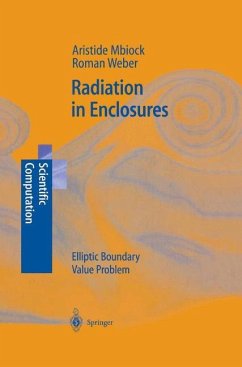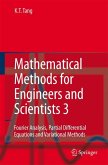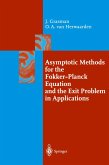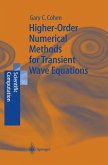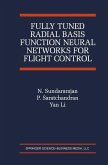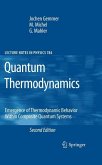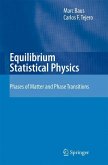This graduate textbook is concerned with both the formulation and the solution of radiation heat transfer problems in enclosures. The book is essentially self-contained and includes a brief historical survey. The foundations are carefully discussed from the point of view of the exact mathematical basis of boundary value problems and their variational solutions as well as of the physical foundations. The computational methods developed by the authors are used in engineering applications. The combinaton of exact mathematical modelling with numerical skills makes this a unique textbook.
During the last half century, the development and testing of prediction models of combustion chamber performance have been an ongoing task at the International Flame Research Foundation (IFRF) in IJmuiden in the Netherlands and at many other research organizations. This task has brought forth a hierarchy of more or less standard numerical models for heat transfer predictions, in particular for the prediction of radiative heat transfer. Unfortunately all the methods developed, which certainly have a good physical foundation, are based on a large number of extreme sim plifications or uncontrolled assumptions. To date, the ever more stringent requirements for efficient production and use of energy and heat from com bustion chambers call for prediction algorithms of higher accuracy and more detailed radiative heat transfer calculations. The driving forces behind this are advanced technology requirements, the costs of large-scale experimen tal work, and the limitation of physical modeling. This interest is growing more acute and has increased the need for the publication of a textbook for more accurate treatment of radiative transfer in enclosures. The writing of a textbook on radiative heat transfer, however, in ad dition to working regularly on other subjects is a rather difficult task for which some years of meditation are necessary. The book must satisfy two requirements which are not easily reconciled. From the mathematical point of view, it must be written in accordance with standards of mathemati cal rigor and precision.
During the last half century, the development and testing of prediction models of combustion chamber performance have been an ongoing task at the International Flame Research Foundation (IFRF) in IJmuiden in the Netherlands and at many other research organizations. This task has brought forth a hierarchy of more or less standard numerical models for heat transfer predictions, in particular for the prediction of radiative heat transfer. Unfortunately all the methods developed, which certainly have a good physical foundation, are based on a large number of extreme sim plifications or uncontrolled assumptions. To date, the ever more stringent requirements for efficient production and use of energy and heat from com bustion chambers call for prediction algorithms of higher accuracy and more detailed radiative heat transfer calculations. The driving forces behind this are advanced technology requirements, the costs of large-scale experimen tal work, and the limitation of physical modeling. This interest is growing more acute and has increased the need for the publication of a textbook for more accurate treatment of radiative transfer in enclosures. The writing of a textbook on radiative heat transfer, however, in ad dition to working regularly on other subjects is a rather difficult task for which some years of meditation are necessary. The book must satisfy two requirements which are not easily reconciled. From the mathematical point of view, it must be written in accordance with standards of mathemati cal rigor and precision.
From the reviews:
"The book is concerned with both the formulation and the general investigation and solution of the radiative heat transfer problem in enclosures of any geometrical shape, and for any temperature distribution and material properties. ... the book contains important advances in the radiation theory and will undoubtedly usefull for engineers and specialists in this field." (Vladimir P. Burskii, Zentralblatt MATH, Vol. 1139 (17), 2008)
"The book is concerned with both the formulation and the general investigation and solution of the radiative heat transfer problem in enclosures of any geometrical shape, and for any temperature distribution and material properties. ... the book contains important advances in the radiation theory and will undoubtedly usefull for engineers and specialists in this field." (Vladimir P. Burskii, Zentralblatt MATH, Vol. 1139 (17), 2008)
"The book is concerned with both the formulation and the general investigation and solution of the radiative heat transfer problem in enclosures of any geometrical shape, and for any temperature distribution and material properties. ... the book contains important advances in the radiation theory and will undoubtedly usefull for engineers and specialists in this field." (Vladimir P. Burskii, zbMATH 1139.35044, 2021)

